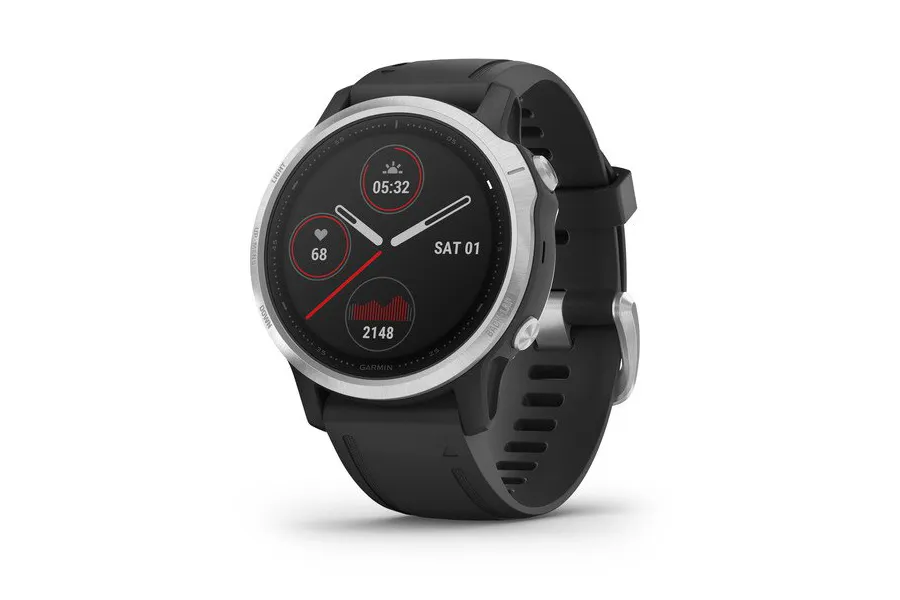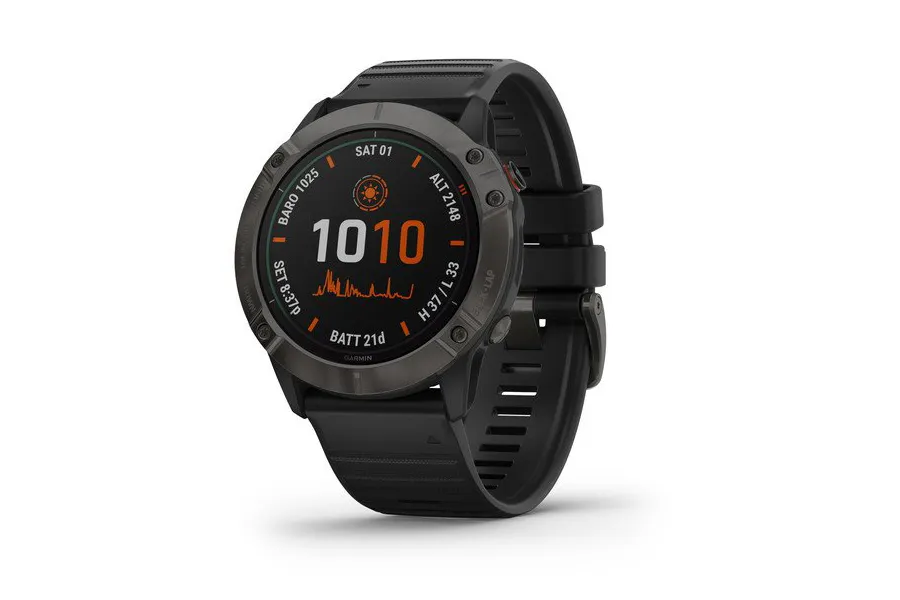Garmin has released the all-new Fenix 6 range of multisport smartwatches. The range consists of three watches; the Fenix 6, Fenix 6S and Fenix 6X, and each comes with a host of new features over the outgoing Fenix 5 series.
The series has two lines, Standard and Pro — the difference is that the Pro versions have WiFi connectivity, maps and the ability to preload music onto the watch. There are also sapphire editions of each watch, which have a more scratch-resistant face.
The S and X-denominators refer to the overall size of the watch, which has a bearing on overall battery life.
All of the smartwatches come with key features expected of a modern smartwatch, including GPS tracking, large sunlight-readable displays, a range of activity modes, optical heart rate monitoring and daily activity tracking.
They also have the ability to connect to Garmin’s Connect IQ store, where you can download apps to expand the functionality of the watch.
- Top 5 cheap smartwatch deals
- Best GPS and smartwatches for cycling: how to choose the right one for you
Garmin Fenix 6 smartwatch range overview and prices
Garmin Fenix 6
- Standard: £529.99/$599.99
- Pro: £599.99/$699.99
- Pro Sapphire Edition: £699.99/$799.99
Garmin Fenix 6S
- Standard: £529.99/$599.99
- Pro: £599.99/$699.99
- Pro Sapphire Edition: £699.99/$799.99
Garmin Fenix 6X
- Pro: £649.99/$749.99
- Pro Sapphire Edition: £749.99/$849.99
- Pro Solar Edition: £849.99/$999.99
Garmin Fenix 6 smartwatch specs

The Garmin Fenix 6 is the base model of the range. The smartwatch is claimed to weigh 72g and the case measures 47mm in diameter.
Compared to the outgoing Fenix 5, the watch sees a decrease in thickness of 7 percent to 14.7mm, and an increase in screen size of 17 percent, up to 1.3in without increasing the overall size of the watch. This is accomplished by shrinking the bezels.
The watch has multi-GNSS support — meaning it can access multiple global navigation satellite systems (GPS, GLONASS and Galileo).
It’s supposedly tested to U.S. military standards for thermal, shock and water resistance, and has a claimed battery life of up to 14 days in smartwatch mode, 36 hours in GPS mode and up to 48 days in the battery saver mode — though this mode comes at the expense of shutting off much of the watch's smart functionality.
Like its predecessors, it has an altimeter, a barometer and a three-axis electronic compass.
It is also ANT+ and Bluetooth Smart enabled, so, for cyclists, it will connect with all your standard training tools, such as power meters, to record enhanced training and ride data.
The updated Garmin Elevate optical heart rate sensor also negates the need for any type of chest strap, and the built-in Pulse Ox sensor also enables a number of features, such as the ability to monitor altitude acclimation and sleep monitoring.
As mentioned, upgrading to the Pro version of the watch will get you WiFi connectivity, mapping and music playback on the watch.
Garmin Fenix 6S smartwatch specs

The Garmin Fenix 6S is designed for people with smaller wrists, or those who just prefer a smaller watch face.
Coming in at 42mm in size, it is claimed to weigh just 58g, has a 1.2in screen and sees a decrease in thickness of 10 percent relative to the Fenix 5S.
The decrease in size doesn’t see it sacrifice any functionality compared to its larger siblings, except for a slight decrease in battery capacity. The Fenix 6S has a claimed battery life of up to 9 days in smartwatch mode, 25 hours in GPS mode and 34 days in battery saver mode.
The Fenix 6S is also available in two colours — black or white — both coming with correspondingly matching straps.
Garmin Fenix 6X smartwatch specs

The Fenix 6X, as the name suggests, is the largest watch in the series. It has a 51mm case and weighs a claimed 82g. Relative to the Fenix 5X, the screen size has increased by 36 percent to 1.4in and the thickness has decreased by 15 percent to 14.9mm.
The Fenix 6X Pro Solar edition also offers, as the name suggests, solar charging functionality. A transparent solar charging lens in the watch's face can be used to extend battery life.
Garmin claims that it has a life of up to 21 days in smartwatch mode, 15 hours in GPS mode with music, and up to 80 days in battery saver mode, plus an additional three days when utilising the solar charging.
As with the Fenix 6S, the Fenix 6X range retains all of the functionality of the base Fenix 6 model.
Is the Garmin Fenix 6 good for cycling?
While cyclists have traditionally stuck with cycling-specific head units, the Fenix 6 smartwatches also have a number of quality-of-life functions that could be of use to cyclists.
Features such as daily activity tracking, contactless Garmin Pay, incident detection and — on the Pro versions — maps, navigation and the ability to preload music could also be useful to some cyclists.
However, it’s the increased functionality of the optical heart rate monitoring that is perhaps of most value. Though power meters are the in-vogue training tool, interest in heart rate data collected pre and post-ride is starting to bubble under the surface again.
By tracking your heart rate variability, stress, sleep and other activity data, Garmin’s Body Battery energy monitor is claimed to be able to estimate when you’re ready to train and, perhaps more importantly, when you might need to rest.
The old adage that ‘you don’t get fitter when you train, but when you recover’, still holds true, and this could potentially help you optimise your training or even avoid getting sick.
Do you use a multisport smartwatch to track your cycling? How does it differ to using a cycling-specific GPS head unit? Have you tried using heart rate variability to inform your training? Let us know in the comments below.
